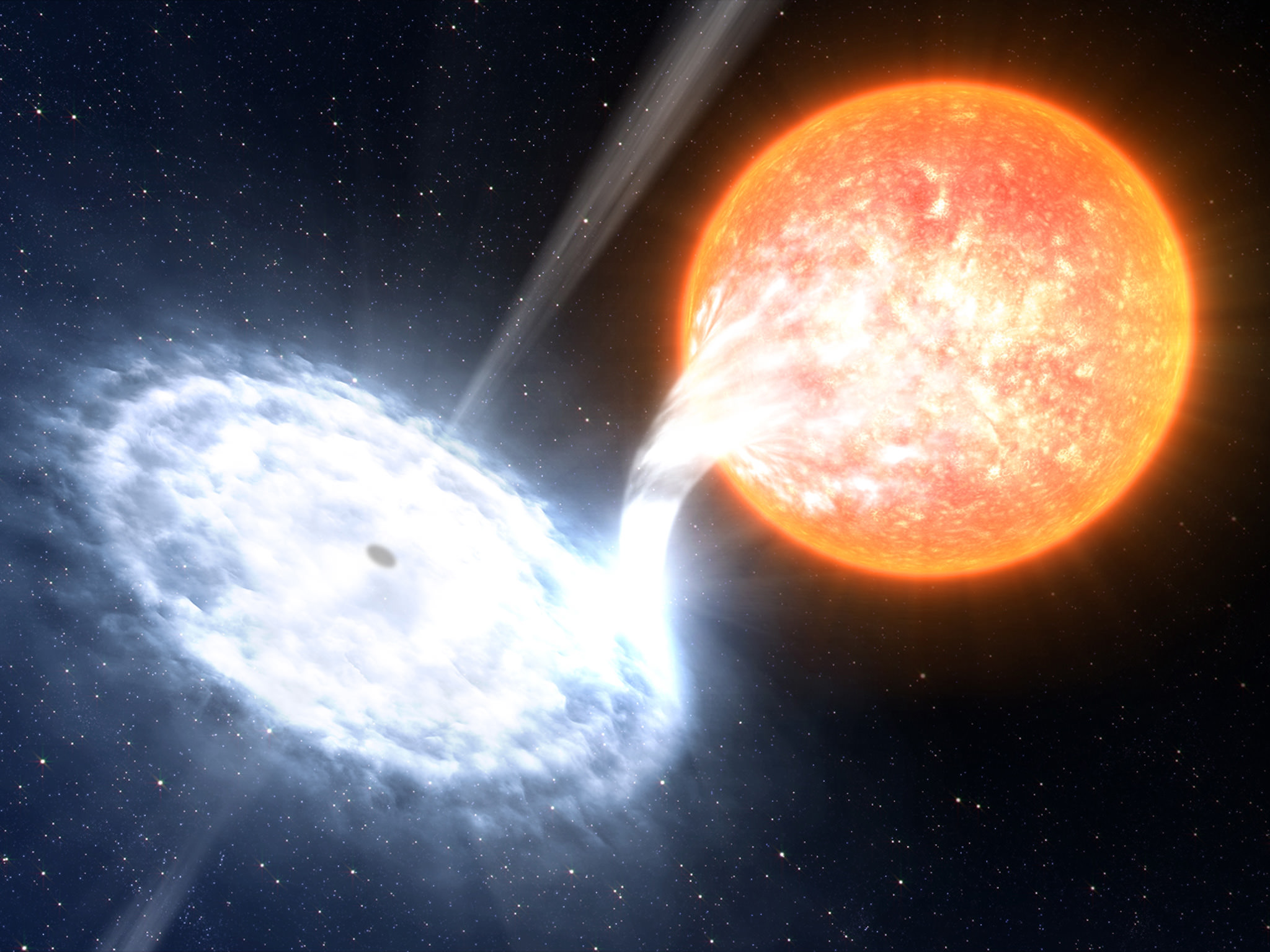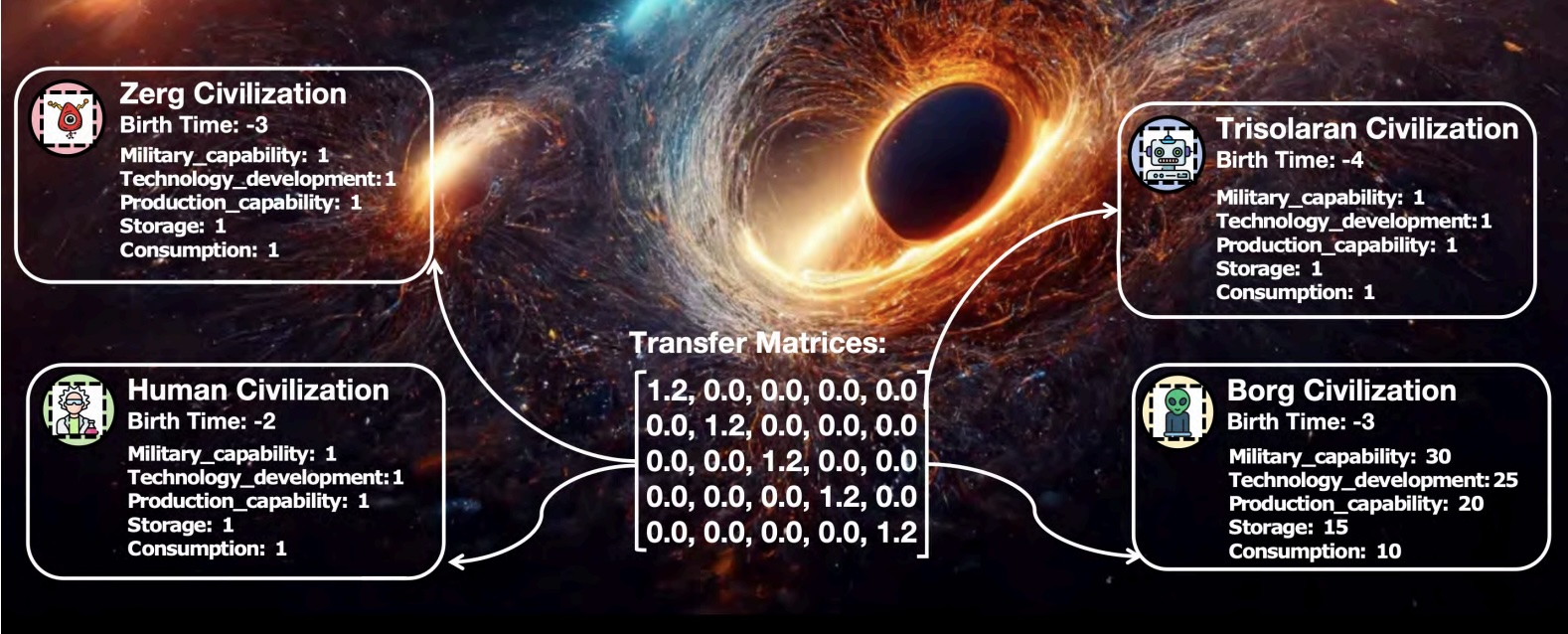It seems that we are completely alone in the universe. But simple reasoning suggests that there should be an abundance of alien civilizations. Maybe they’re all out there, but they are keeping their distance. Welcome to the zoo (hypothesis).
Continue reading “What is the Zoo Hypothesis?”Does Life Really Need Planets? Maybe Not

Do we have a planetary bias when it comes to understanding where life can perpetuate? It’s only natural that we do. After all, we’re on one.
However, planets may not be necessary for life, and a pair of scientists from Scotland and the USA are inviting us to reconsider the notion.
Continue reading “Does Life Really Need Planets? Maybe Not”New Study Examines How Extraterrestrial Civilizations Could Become “Stellivores.”
One of the most challenging aspects of astrobiology and the Search for Extraterrestrial Intelligence (SETI) is anticipating what life and extraterrestrial civilizations will look like. Invariably, we have only one example of a planet that supports life (Earth) and one example of a technologically advanced civilization (humanity) upon which to base our theories. As for more advanced civilizations, which statistically seems more likely, scientists are limited to projections of our own development. However, these same projections offer constraints on what SETI researchers should search for and provide hints about our future development.
In a series of papers led by the Blue Marble Space Institute of Science (BMSIS), a team of researchers examines what Earth’s level of technological development (aka. “technosphere”) will look like in the future. In the most recent installment, they offer a reinterpretation of the Kardashev Scale, which suggests that civilizations expand to harness greater levels of energy (planet, host star, and galaxy). Instead, they suggest that the Kardashev Scale establishes upper limits on the amount of stellar energy a civilization can harness (a “luminosity limit”) and that civilizations might circumvent this by harnessing stellar mass directly.
Continue reading “New Study Examines How Extraterrestrial Civilizations Could Become “Stellivores.””Project Hyperion is Seeking Ideas for Building Humanity’s First Generation Ship

The dream of traversing the depths of space and planting the seed of human civilization on another planet has existed for generations. For long as we’ve known that most stars in the Universe are likely to have their own system of planets, there have been those who advocated that we explore them (and even settle on them). With the dawn of the Space Age, this idea was no longer just the stuff of science fiction and became a matter of scientific study. Unfortunately, the challenges of venturing beyond Earth and reaching another star system are myriad.
When it comes down to it, there are only two ways to send crewed missions to exoplanets. The first is to develop advanced propulsion systems that can achieve relativistic speeds (a fraction of the speed of light). The second involves building spacecraft that can sustain crews for generations – aka. a Generation Ship (or Worldship). On November 1st, 2024, Project Hyperion launched a design competition for crewed interstellar travel via generation ships that would rely on current and near-future technologies. The competition is open to the public and will award a total of $10,000 (USD) for innovative concepts.
Continue reading “Project Hyperion is Seeking Ideas for Building Humanity’s First Generation Ship”New Study Suggests that Our Galaxy is Crowded or Empty. Both are Equally Terrifying!

Is there intelligent life in the Universe? And if so, just how common is it? Or perhaps the question should be, what are the odds that those engaged in the Search for Extraterrestrial Intelligence (SETI) will encounter it someday? For decades, scientists have hotly debated this topic, and no shortage of ink has been spilled on the subject. From the many papers and studies that have been written on the subject, two main camps have emerged: those who believe life is common in our galaxy (aka. SETI Optimists) and those who maintain that extraterrestrial intelligence is either rare or non-existent (SETI Pessimists).
In a recent paper, David Kipping (Prof. “Cool Worlds” himself) and Geraint Lewis examined this debate more closely and offered a fresh take based on a form of probability analysis known as Jayne’s Experiment. By applying this method to astrobiology and the Drake Equation, they concluded that the existence of intelligent life in our galaxy may be an “all or nothing” proposition. To quote the late and great scientist and science fiction author Arthur C. Clarke: “Two possibilities exist: either we are alone in the Universe, or we are not. Both are equally terrifying.”
hnDo Planets Have the Raw Ingredients for Life? The Answer is in their Stars
Finding planets that already have, or have the ingredients for intelligent life is a real challenge. It is exciting that new telescopes and spacecraft are in development that will start to identify candidate planets. Undertaking these observations will take significant amounts of telescope time so we need to find some way to prioritise which ones to look at first. A new paper has been published that suggests we can study the host stars first for the necessary raw elements giving a more efficient way to hunt for similar worlds to Earth.
Continue reading “Do Planets Have the Raw Ingredients for Life? The Answer is in their Stars”The Rugged Desert Moss Best Equipped to Survive on Mars
For decades, we have seen Mars as a desolate landscape devoid of any signs of life. Attempt to identify ways of growing plants and food on the red planet have focussed on greenhouse like structures to enable plants to survive, that is, until now! A desert moss called ‘Syntrichia caninervis’ has been identified and it can grown in extreme environments like Antarctica and the Mojave Desert. A new study revealed the moss can survive Mars-like environments too including low temperatures, high levels of radiation and drought.
Continue reading “The Rugged Desert Moss Best Equipped to Survive on Mars”Could Alien Solar Panels Be Technosignatures?

If alien technological civilizations exist, they almost certainly use solar energy. Along with wind, it’s the cleanest, most accessible form of energy, at least here on Earth. Driven by technological advances and mass production, solar energy on Earth is expanding rapidly.
It seems likely that ETIs (Extraterrestrial Intelligence) using widespread solar energy on their planet could make their presence known to us.
Continue reading “Could Alien Solar Panels Be Technosignatures?”Astronomers are on the Hunt for Dyson Spheres

There’s something poetic about humanity’s attempt to detect other civilizations somewhere in the Milky Way’s expanse. There’s also something futile about it. But we’re not going to stop. There’s little doubt about that.
One group of scientists thinks that we may already have detected technosignatures from a technological civilization’s Dyson Spheres, but the detection is hidden in our vast troves of astronomical data.
Continue reading “Astronomers are on the Hunt for Dyson Spheres”An AI Simulated Interactions Between Different Kinds of Advanced Civilizations
The possibility for life beyond the Earth has captivated us for hundreds of years. It has been on the mind of science fiction writers too as our imaginations have explored the myriad possibilities of extraterrestrial life. But what would it really be like if/when we finally meet one; would it lead to war or peace? Researchers have used a complex language model to simulate the first conversations with civilisations from pacifists to militarists and the outcomes revealed interesting challenges.
Continue reading “An AI Simulated Interactions Between Different Kinds of Advanced Civilizations”




